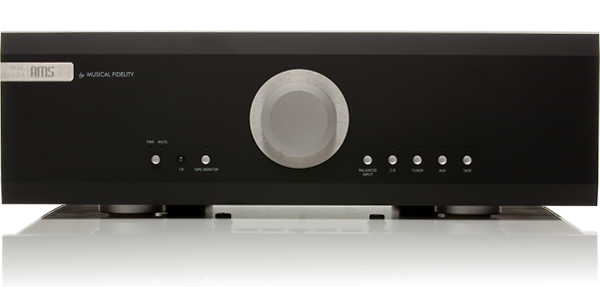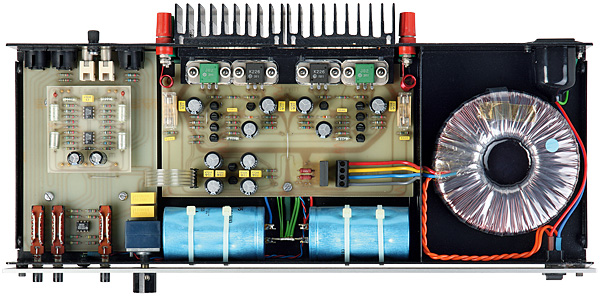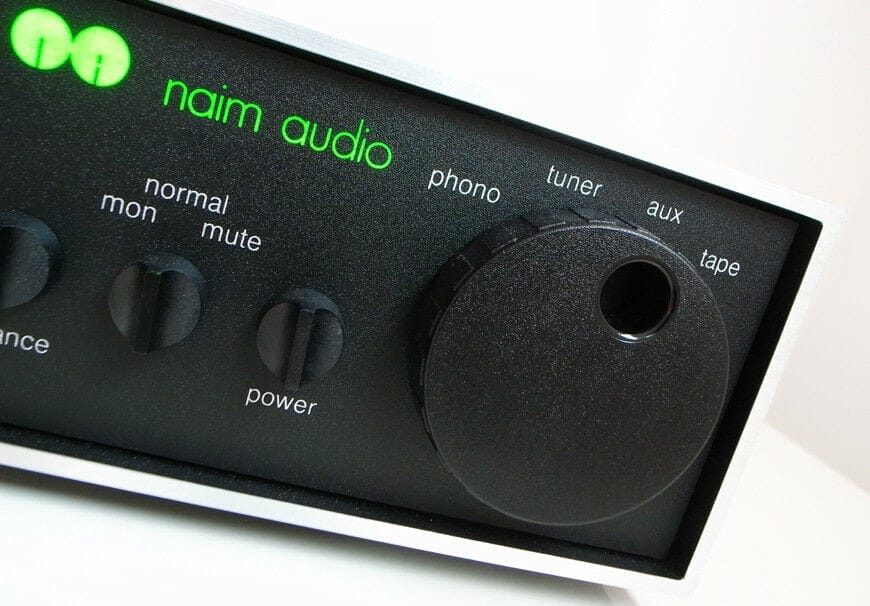In 2016, this £1,250 integrated amplifier was released. It features five line inputs, a moving magnet phono stage, and aptX wireless Bluetooth, however it lacks DAC functionality. Aside from the Bluetooth, which is unabashedly a convenience feature, this amplifier looks a lot like something from the 1980s. It’s a big, Class AB thug with a lot of audiophile care and attention to detail.
In comparison to its predecessor, it is symmetrically set out on the inside with new op-amps, audio, and power supply circuits. The new chassis offers greater ventilation for cooler operation, as well as high-quality signal output relays. The power amplifier component, interestingly, is driven directly from the mains supply via a 550VA toroidal transformer with five controlled supply rails. The manufacturer claims 140 watts RMS per channel into 8 ohms and over 220 watts into 4 ohms, implying a powerful power supply. The Vichey IRSP9240 and IRSP240 MOSFET power modules are installed, resulting in a lot of power from an amplifier of the Roksan’s dimensions (432x380x102mm), despite the fact that it is a touch heavier than some at 14kg.
The Roksan is pleasant to use, despite the fact that the main power switch is buried beneath the fascia; the fascia contains a ‘mode’ button that toggles between on and standby. The new Roksan system remote comes standard with the K3, an excellent metal-framed device that’s easy to use and allows you to manage a Roksan CD player and amplifier from the comfort of your couch. The convenient aptX feature, which is handled by a module with its own internal digital-to-analogue converter, works well and is simple to set up.
This small component has an uncanny capacity to transform music into something magical – and, interestingly, it doesn’t matter what kind of music it is. Whether it’s Kraftwerk’s wonderful Electric Café album, which I consider to be one of the most seminal electronic music recordings ever produced, or the somewhat shoddy 2009 restoration of The Beatles’ White Album, the K3 always gets to the heart of the matter. It has the unique capacity to transport you beyond the recording, allowing you to lose yourself in the music rather than worrying about it.
It has flaws, but they don’t get in the way. The Beatles’ Mother Nature’s Son seemed to take on a life of its own, thanks to a high-end CD transport and a dCS Debussy DAC. The song floated and emoted through one of the amplifier’s line inputs, and the amplifier sent out an extraordinarily broad recorded acoustic, seemingly unconscious of the loudspeaker boundaries. It was unexpectedly sweet and smooth tonally, perhaps with a small emphasis on the upper midband, but bass was very robust and slightly warm by comparison to its competitors. It was incredibly dynamic, going out of its way to emphasise the music’s accenting. The music also flowed magnificently, as if it were a rushing river bubbling over its borders. It provided the song a strong sense of purpose and direction, completely enthralling the listener, in this case myself.
When you stepped into Kraftwerk’s Telephone Call, the stereo soundstage seemed to expand TARDIS-style. It was huge, with crashing electronic percussion, addictive drum breaks, and beautiful sequenced piano lines. Snares hammered, electronic baselines muttered, and drum machine cymbals shimmered. Ralf Hutter’s vocals were extremely pure, as if you were standing in the singing booth with him. I was never thinking about how good it was for the price; instead, I was completely engaged in the mix’s beauty. This is an uncommon quality in any solid-state amplifier, much less one that costs £1,250.
The phono stage is adequate, however an offboard phono stage will yield superior results. I put on an ancient edition of Supertramp’s Breakfast in America LP and was quickly engrossed in Child of Vision, marveling at the level of detail, the ‘walk-around soundstage,’ and the ease with which all of the instruments could play independently. Indeed, the K3 may dupe the listener into overlooking its flaws – which are, admittedly, minor – and celebrating the music like it’s your birthday. The only drawback is its narrow tonal palette; everything sounds a little warm, regardless of whether it was recorded that way or not. Overall, a fantastic value integrated — classic in style but cutting-edge in performance.







